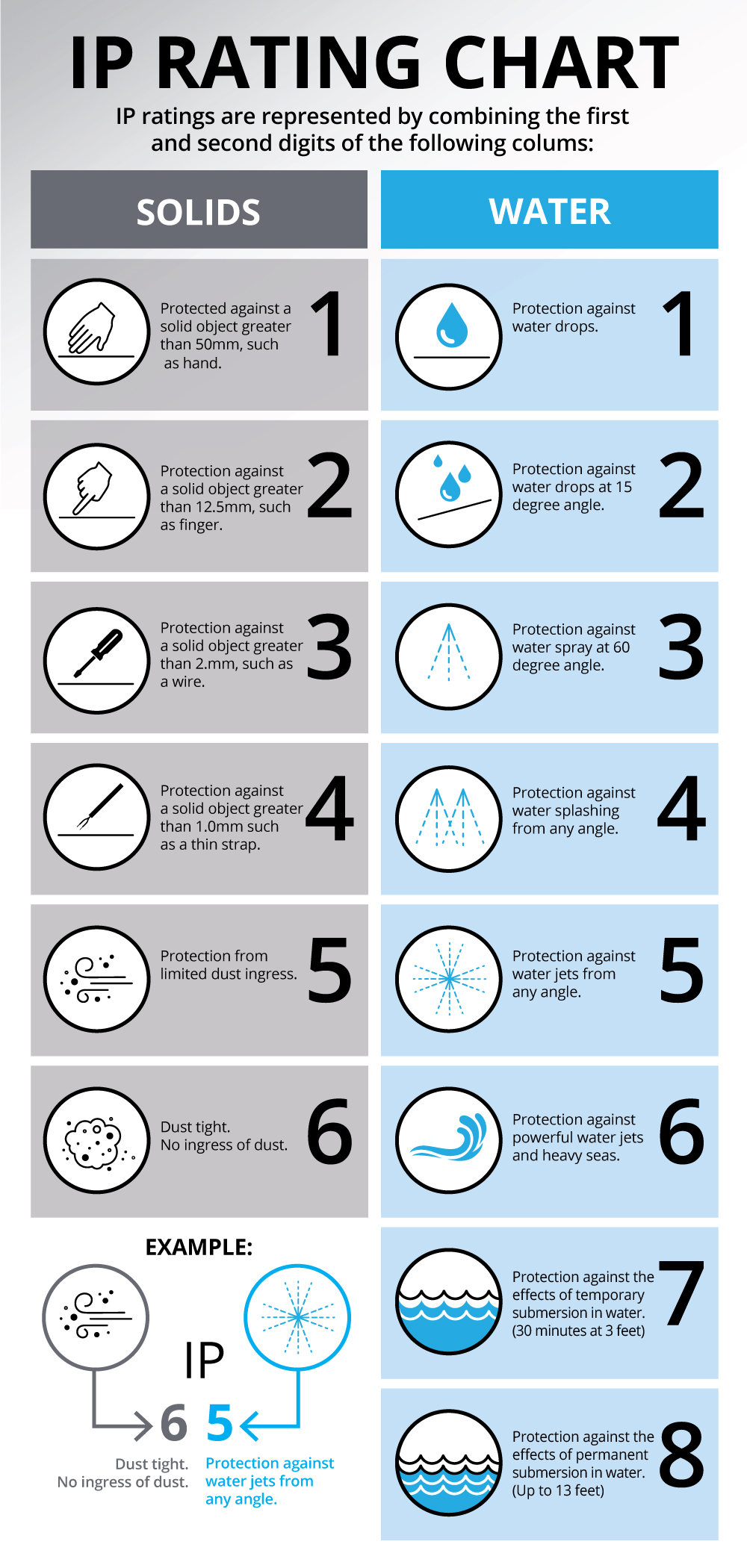Blog
The Light Direction Blog:
Waterproof or Water Resistant… What do all these IP ratings mean? by Frank Grobmeier
When spring showers hit, most people’s minds turn to flowers, warmer weather and their dormant grass springing to life, but those of us in the lighting design and engineering business think of ingress protection and safety. That’s because those spring showers bring potential hazards for outdoor lighting products.
You may have heard the news that electricity and water don’t mix. You don’t have to believe me, but I wouldn’t recommend finding out for yourself.
So in this blog, we’ll be taking a look at the differences between the, often confusing, terms of waterproof and water-resistant, and how you can identify the different levels of protection just by looking at a product package or a manufacturer’s spec sheet.
In short, “water resistant” describes the fixture’s ability to resist water penetration to a certain degree but perhaps not entirely. On the other hand, “waterproof” technically means that it's impermeable no matter how much time it spends in the water.
While that may be a good enough answer for you, there’s more. There are actually different levels of protection, and they’re found in the fixture’s “IP Rating.”
IP is an acronym "Ingress Protection" which is a measurement of the protection an item will have against solid objects (dust, sand, dirt, etc.) and liquids.
An IP rating is comprised of two numbers. An example is an IP65 Rating. The first number (in the example: 6) refers to the protection against solid objects (dust, sand, etc.), and the second number (in the example: 5) refers to protection against liquids.
Each IP rating has two numbers, both of which give you information about the protection level. A higher number means greater protection against solids and liquids. - The first number (0-6) refers to the level of protection against solid objects and moving parts, such as dust, debris, or other solid matter. - The second number (0-8) references the level of liquid and moisture protection. Take a look at the chart below to better understand the protection offered with each number.

The differences between commonly sold IP65, IP66, IP67, & IP68 outdoor lighting fixtures are slight, but very important. Using the above chart as a guide, we can see that all outdoor fixtures are protected at the highest level from solids and dust. The variations come with the protection against liquids.
IP65 = Water resistant, or “Protected against water jets from any angle.” *Do NOT submerge IP65 LED fixtures, these are not waterproof.
IP66 = Water resistant, or “Protected against more powerful water jets and heavy seas from any angle.” *Do NOT submerge IP66 LED fixtures, these are not waterproof.
IP67 = Water resistant plus, or “Protected against the events of temporary submersion (10 minutes).” *Do NOT submerge IP67 LED fixtures for extended periods, these are not waterproof.
IP68 = Waterproof, or “Protected against the events of permanent submersion up to three meters.”
If you don’t anticipate a harsh environment that is extremely dusty or wet, then a lower IP rating fixture will suffice.
In places that will have a lot of dust, debris, or potential to be in contact with any solids or liquids, you’ll want to make sure that the IP ratings are high, and that you have adequate water resistant or waterproof coatings on your LED strip lights. Manufacturers generally list the IP ratings on the fixtures themselves as well as on the product packaging and on their specification sheets / brochures. A little investigation of the product’s IP rating before you install it could save you a lot of headaches (and worse) in the long run.
Frank Grobmeier has over 30 years of product management and marketing experience with lighting manufacturers including decades in general lighting and specialty lighting with traditional and LED sources. He currently serves as on the Fanlight / Naturaled marketing management team and resides in the Chicago area.
